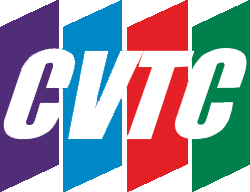September looming doesn’t just mean the start of a new school year (for better or for worse) or the end of summer, it also marks the end of the CERB program for those who lost their jobs due to Covid-19. The program was set to expire at the end of September with final payments trickling in through October; however, with the pandemic not only still ongoing but numbers ramping up again, unemployment rates are still uncomfortably high and many people were still quite worried about how to make ends meet, particularly those in the hospitality and retail sector.
On August 20, the federal government announced that they are rolling out a simplified EI process that the CERB will be blended into for the fall. Here’s how it is projected to work, assuming it passes Parliament:
- Hour eligibility: Dropped to a flat 120 hours in response to the fact that so many people have not been working since March and so too many would be ineligible under the usual hours required.
- The payment would be $400/week for up to 26 weeks for those who are otherwise not eligible for the ‘traditional’ EI (usually because of lack of hours).
- There will also be a $500/week benefit for people who have to stay home due to illness, school/daycare closures or because they have to take care of someone who is ill.
- There will be changes made to ensure that people are still incentivized to work by making sure that there less reduction in benefits as people work
- EI premiums will be frozen for two years
It’s estimated that this measure will save around 400,000 Canadians who would otherwise fall through the cracks once CERB ends due to not being eligible for EI via the normal routes.
The Transition
Those who have been on CERB will be switched to the new EI system once they have reached the maximum benefit for CERB (28 weeks since there was a four week extension also announced). This new EI will be launched for September 27 in order to ‘catch’ the people who would fall off CERB and not get caught by the traditional EI due to a lack of hours or other issues.
Qualifications:
In order to qualify for this new EI, you must have worked at least 120 insurable hours in the last 52 weeks. Claimants will also get a one-time credit of 300 insurable hours for job loss claims or 480 insurable hours if they have taken a leave for sickness, pregnancy, parental or compassionate care or family caregiver reasons. This credit will be available for one year and retroactive to March 15 for people who wanted to switch from CERB to EI maternity, parental, compassionate care, family caregiver or work sharing benefits and could not do so because they did not meet the original hourly requirements. (In other words, you can get the equivalent of the required hours now in credit and claim that).
How Much Money Will be Given?
Instead of the usual 55% of average weekly earnings, up to $573/week, those on this EI will get at least $400/week or $240/week for extended benefits if this is higher than their extended benefits would otherwise have been. In other words, you’re looking at getting at least $240/week for extended benefits and $400/week for anything else.
What if I STILL Don’t Qualify?
If you still don’t have the hours or you are self-employed, you can still qualify for the Canada Recovery Benefit which provides $400/week for up to 26 weeks while you look for work. You can still earn income from employment or self-employment will on it, but you have to pay back 50 cents per dollar earned above an annual income of $38,000 on your tax return.
Isolated?
If you have to quarantined due to Covid-19, you can get $500/week for up to two weeks. You cannot get this if you are also taking paid sick leave. It’s likely you’ll need some sort of verification that you were actually infected with Covid-19, so make sure you have your medical records ready in case you get asked.
What if I have to Take Care of Children?
The Canada Recovery Caregiving Benefit has been announced to deal with that gap. It is a temporary program for workers who have to miss work to care for a child under the age of 12 or a family member or dependent due to school, daycare or day program facility closures.
This benefit pays $500/week for up to 26 weeks per household and only one member of a household at any time can receive the benefit. You are not eligible if you simply prefer to keep dependents at home when their usual facilities are open.
It’s hoped by many that the roll out of these new benefits (or at least the new tweaks on the benefits) will lead to an overhaul of the social security system as a whole with some people lauding it as precursor to things like Universal Income or at least a more stable EI that doesn’t have fluctuating hours and a percentage of income as a benefit. The application system and online system has also been tweaked and streamlined to make the process swifter and smoother. It’s also more beneficial to people who work gigs and self-employed as it offers a security net for them too.
In the meantime, these are still considered temporary measures and assuming they go through legislation, will be rolled out for September 27, 2020.
Stay healthy!


